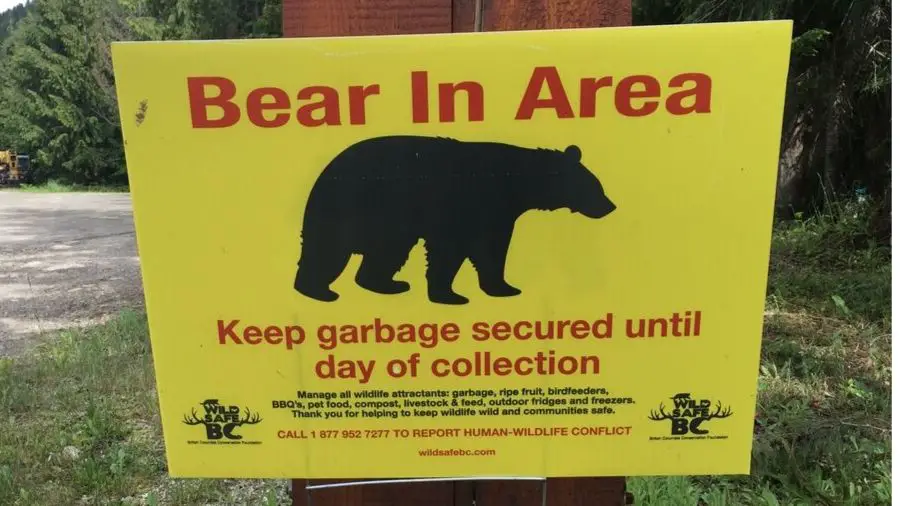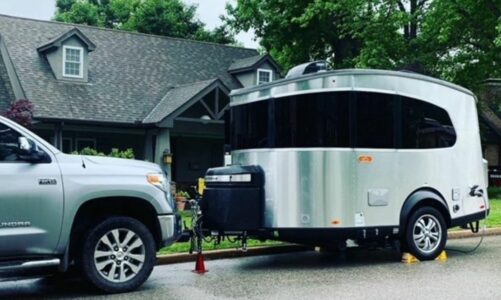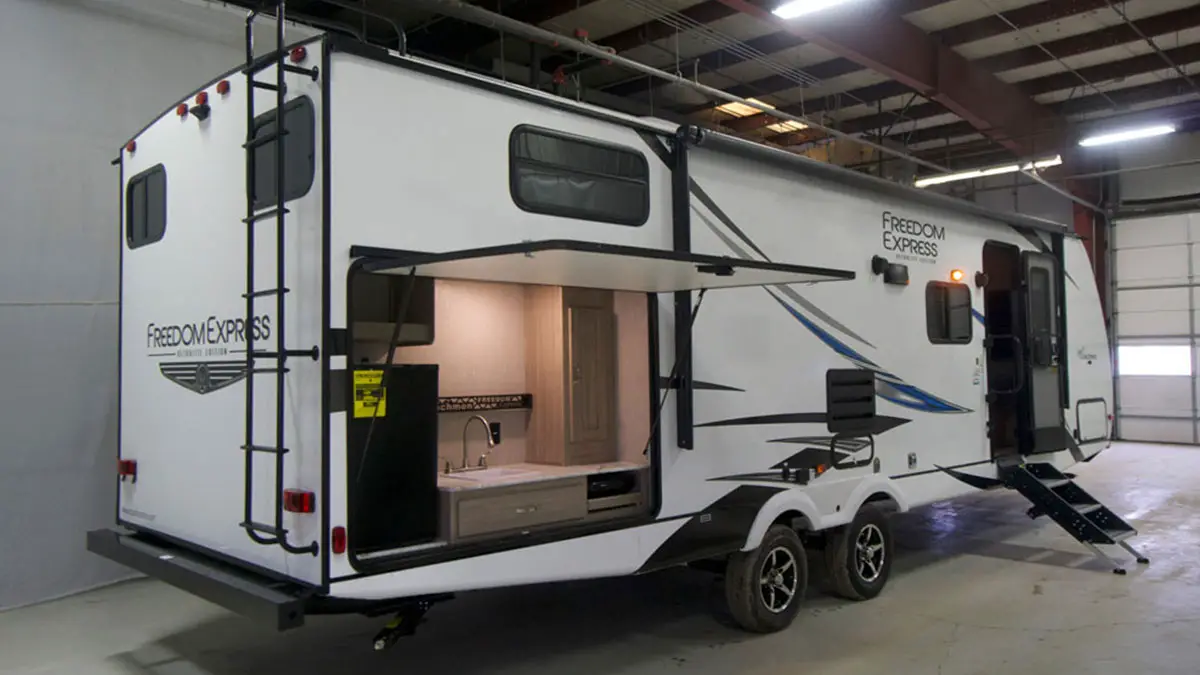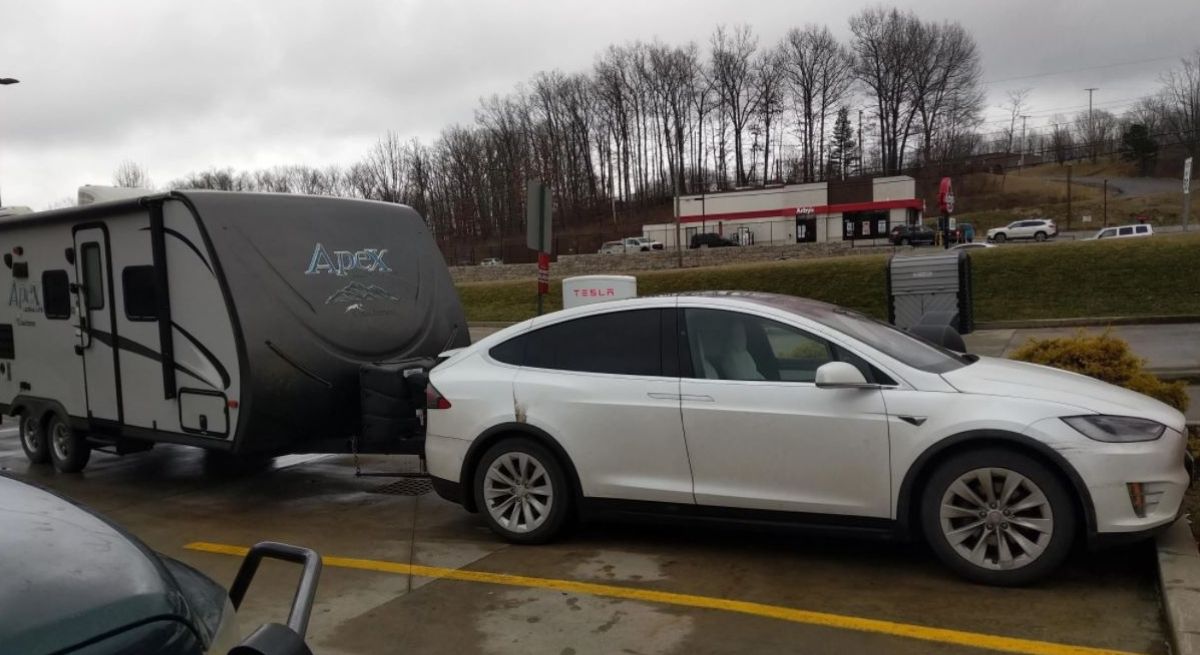Canadian and US National parks like Banff, Lake Louise, Kootenay National Park, Yosemite, Yellowstone, and Glacier Park have some of the most breathtaking natural beauty. And while we’re excited to pack up and head into these parks, we also want to know that we’re safe in doing so, especially for those of us with a popup camper.
If you’re wondering, “Is a popup camper safe from bears?” Well, kind of safe. A pop-up tent trailer would not stop a determined grizzly bear or any other type of bear from entering.
There are several things you need to keep in mind when camping with a pop-up tent trailer in bear country, that does not create an open invitation for bears to visit. Here are the things to follow:
- Keep camping gear in any electrically fenced areas specified to keep bears out, if there is such a designated camping area.
- Always keep all your food and toiletries in a bear safe box, your car locked up or a hung up bear bag.
- Do not cook inside your tent trailer
- Be very meticulous about putting away food and toiletries after use.
- Listen to the ranger, as they typically know if there is bear activity in the area that you are planning on camping in, and areas you might want to avoid or perhaps not be allowed in due to high bear activity.
Even though you may follow all these steps you still might have a bear visit your campsite. Typically though, bears are afraid of humans and try to avoid all human contact, unless they have been fed by humans in the past. So, a wild bear will likely stay away from the sounds of humans, and generally, you should be more than safe in your tent trailer. We’ll cover some of those things in greater detail, like why a park would decide to restrict popups, food storage and what to do if you do encounter a bear.
Where Are You Headed?
If you’re headed to places like Western Canada (Alberta & British Columbia), Montana, Alaska, Utah, and some parts of Northern Washington then you are among those areas most common for the inhabitants of bears. Some of the most popular national parks in these areas in Canada such as Banff, Lake Louise, and Kootenay National Park.
In the USA we have Yellowstone, Yosemite, Glacier Park, and Glacier Bay Park are included in these areas. The wildlife and landscape are impressive, and the good news is that you can experience it all with your popup camper. In fact, in most national parks people have been camping with tents since the early 1900s and still do to this day. The truth is, if a bear is looking for a confrontation, a tent or even a canvas popup isn’t going to stand a chance. But this behavior certainly isn’t typical of bears in a campground setting.
If you look around on the internet in camping discussion sites or national park websites you will find that when people talk about popup camping throughout these areas, many mention Fishing Bridge, in Yellowstone, as a campground that will not allow anything but hard-sided RV’s. Then there is Lake Louise in Alberta Canada, which has an electric fenced area for tenters and popup tent trailers. This is due to the heavy grizzly bear activity in these areas.
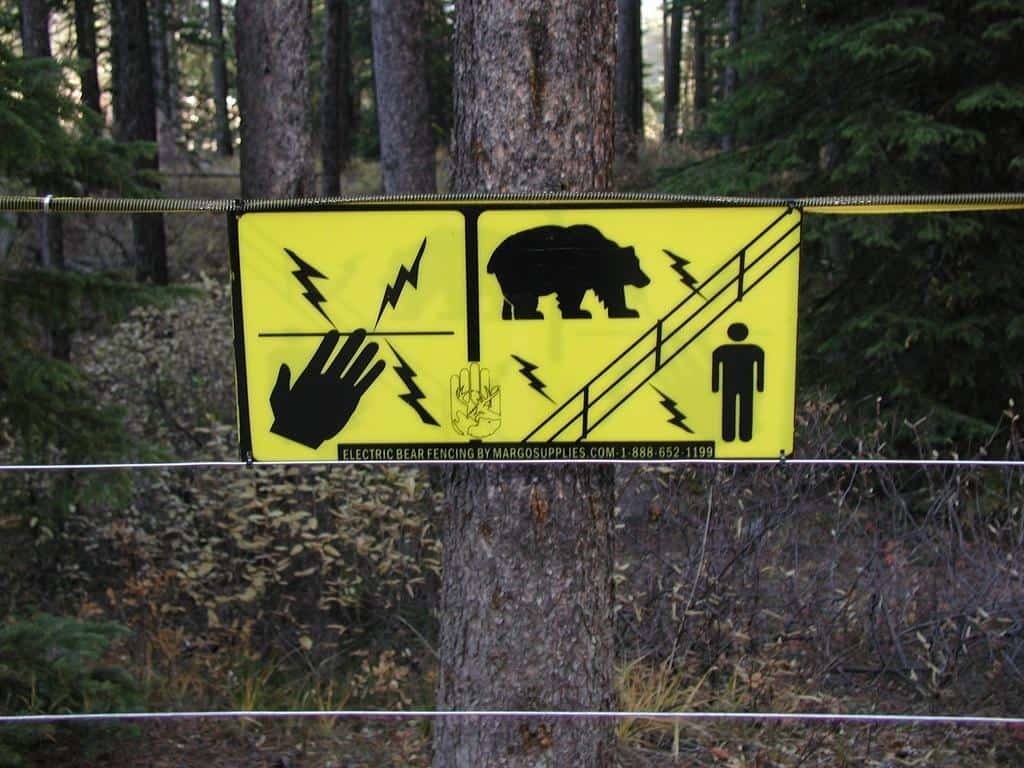
Electric Bear Fence at Lake Louise, Alberta Canada
Fishing Bridge, was the only confirmed park that didn’t allow popups. It is recommended that you go to the national parks service website and look up any specific park before your visit for helpful information before arriving.
How you Store Your Food Storage Matters
Bears, in general, are looking for food. Feeding bears only gets them accustomed to human food and alters their foraging habits which causes further human encounters with that bear.
Bears that have multiple encounters with humans are then required to be relocated and even possibly put down after failed relations. Either way, it ends badly for the bear. One of the best ways that campers can feel safe, no matter where they are camping in, is by following food storage guidelines that are set up at some of the national parks and campgrounds with bears in the area.
As a general rule, if you are staying in a popup or tent, it is imperative that all food is stored outside of those living quarters and at least 150 feet from your campsite or the designated food storage areas. There are different ways this can happen. Here are a few.
Choose a Bear Box
Many parks in these areas have bear boxes either on each site or situated among several sites. These boxes, made of steel with doors that lock shut, are built to withstand a bear’s attempt to get into them. Coolers, canned goods and even toiletries (anything scented) can be stored in these here. It’s important to know ahead of time what you will be able to fit in these bear boxes, so be sure to check, either online or over the phone, with the parks you plan to camp at.
There is nothing more disappointing than arriving, only to find that half of your food won’t fit. If you’re interested in having something bear-proof of your own, there are places online and at outdoor stores where you can purchase bear canisters. This would be an option as well.
Use Your Car
Maybe there are no bear boxes at your particular site, or maybe they’re full. There are some parks that will allow you to store things in your car, if you need to, but that is not always the case. If you are able to and plan on using your car, you should always be sure to have car doors and windows closed at all times. Many people use storage bins for dry goods to keep them closed up and contained, even in the car. It also makes for better organization. Toiletries should also be stored here if there is no bear box.
Hang A Bear Bag
In cases where there are no bear boxes and your car is not an option for whatever reason, a hanging bear bag is another option. Downwind from your campsite, by 150 feet, you would hang a bear bag. The height would be at least 10 to 12 feet high. There are three ways to do this.
- method is the where you find a tree with a horizontal branch and you hang your food on a pulley system.
- The PCT method, which utilizes a slip knot method.
- This is where you string a rope between two trees at least twelve feet off the ground and create a pulley system to pull up your food.
This video better describes how to do all three methods.
Get Rid of Your Trash
Bears, like most mammals, have an incredible sense of smell. So even trash is very important to take care of. Campers who are in bear-heavy areas will want to be sure to dispose of all trash every night, including food waste that may still be in the fire pit. Simply bagging it up isn’t enough. Parks, where this is a, must typically have designated trash disposals that are protected from bears getting into them. While a bear sighting would be a memory to talk about for years to come, your own personal campsite may be a little too close for comfort.
Bear Country Camping Gear
Of course, any hobby has an array of things you can purchase to improve your experience. Camping is certainly no different. Here are some of the items available for bear country campers.
- Bear Spray or Bear Bangers
- Bear-proof storage containers
- Heavy-duty carabiners for closing up things or hanging food and trash from the bear bag
These things are a must, you may find they’re useful if you’re camping in these areas often or want to be ultra-prepared.
Keep A Safe Distance
The two most common types of bears in bear country are the Black Bear and the Brown Bear or Grizzly Bear. Of these two, the Grizzly Bear is generally considered the more aggressive. For the most part, bears do not go around looking for humans to attack unless they are confusing them with food or feel spooked or threatened. You may think that being calm and quiet is the best way to keep bears from entering your space, but the opposite is actually true.
If you are trying to keep bears from coming into your territory at all, making a good amount of noise is recommended. Talking with each other, the occasional clanging of dishes or music playing –these are all ways to make it obvious that you are there and aren’t startling the bear. They will almost always keep their distance. This same idea applies when hiking on the trails in these areas. You never want to be a surprise or come on a bear suddenly. So, make yourself known as you are walking through the forests.
What If I Do Encounter A Bear At My Campsite?
Is there really a more terrifying thought than camping deep in the woods and having a bear enter your campsite? While the chances of this happening are very slim, here are a couple of things to keep in mind. It’s true that making plenty of noise is helpful in keeping bears from approaching, but if they have already approached, you will want to talk calmly and move slowly.
- No sudden moves and back up slowly
- Do not stare at the Bear and make direct eye contact, this is a challenge to the bear
- Give the bear it space
- Do not run
- Get a hold of small children immediately
- Move inside your vehicle as quickly as possible
The national park services in Canada and the US report these sightings on their website, but the best way to find out is to call the local ranger office and ask about the area you are planning on camping in.
People are generally restricted from entering areas where there have been multiple bear sightings.
This is, if nothing else, interesting information to have before traveling to these parts. Who doesn’t want to take a trip, at some point in their lives, to see all of the natural beauty and wildlife that some of the best national parks and surrounding areas have to offer? Despite what you may hear, it is widely accepted that popup campers are considered a safe way of camping within bear-heavy areas.
Campers should always be on the alert in these areas, but people have been doing it for years and the far majority will tell you that they felt very safe when doing so. So, buy some bins! Stock up! And plan your next trip in the great outdoors!
Let me know if the information in this article was helpful or if you know of other locations that are either electric fenced or have camping restrictions due to bear activity.

